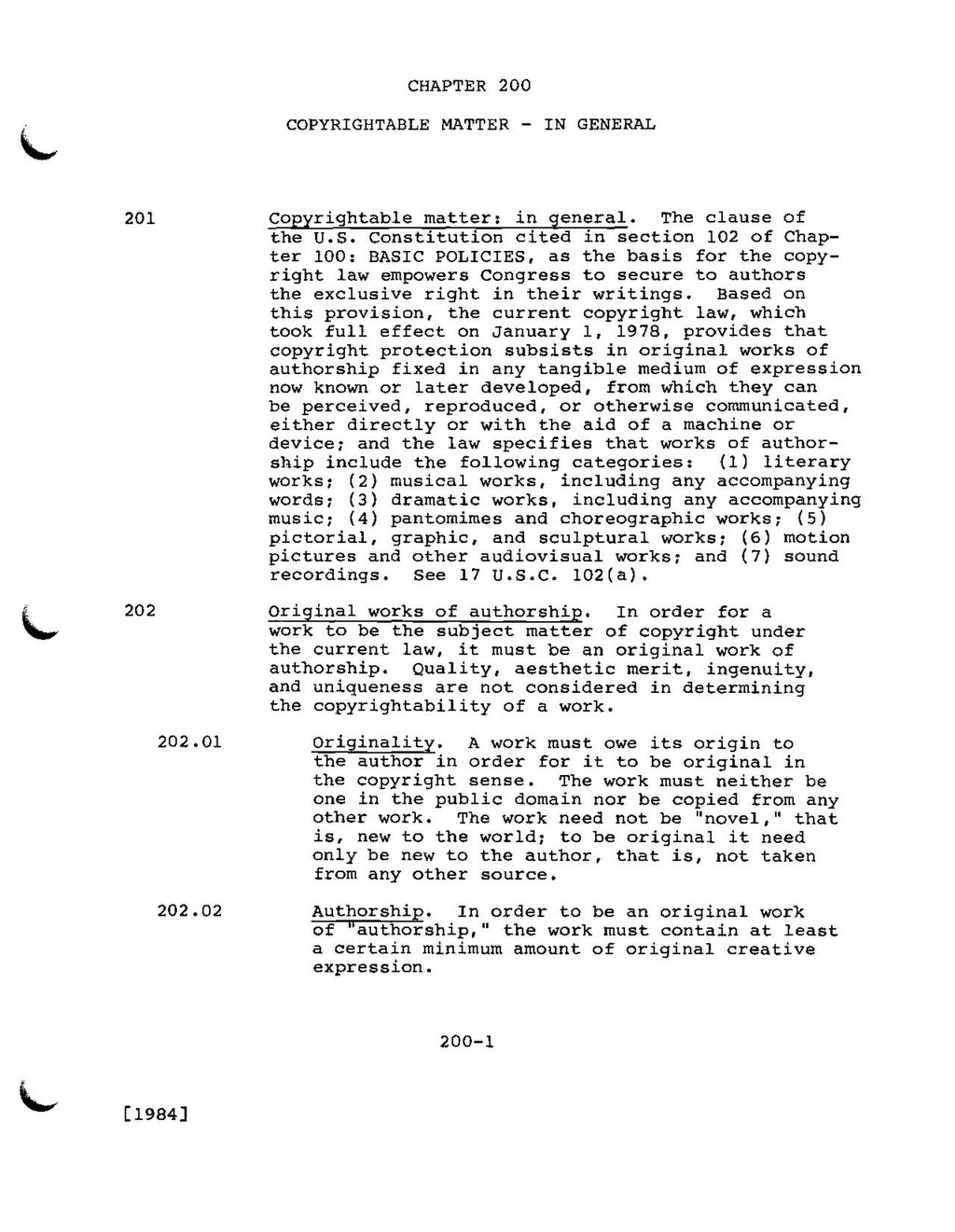CHAPTER 200
COPYRIGHTABLE MATTER - IN GENERAL
201
Copyrightable matter: in general. The clause of the U.S. Constitution cited in section 102 of Chapter 100: BASIC POLICIES, as the basis for the copy right law empowers Congress to secure to authors the exclusive right in their writings. Based on this provision, the current copyright law, which took full effect on January 1, 1978, provides that copyright protection subsists in original works of authorship fixed in any tangible medium of expression now known or later developed, from which they can be perceived, reproduced, or otherwise communicated, either directly or with the aid of a machine or device; and the law specifies that works of authorship include the following categories: (1) literary works; (2) musical works, including any accompanying words; (3) dramatic works, including any accompanying music; (4) pantomimes and choreographic works; (5) pictorial, graphic, and sculptural works; (6) motion pictures and other audiovisual works; and (7) sound recordings. See 17 U.S.C. 102(a).
202
Original works of authorship. In order for a work to be the subject matter of copyright under the current law, it must be an original work of authorship. Quality, aesthetic merit, ingenuity, and uniqueness are not considered in determining the copyrightability of a work.
202.01
Originality. A work must owe its origin to the author in order for it to be original in the copyright sense. The work must neither be one in the public domain nor be copied from any other work. The work need not be "novel," that is, new to the world: to be original it need only be new to the author, that is, not taken from any other source.
202.02
Authorship. In order to be an original work of "authorship," the work must contain at least a certain minimum amount of original creative expression.
200-1
[1984]
